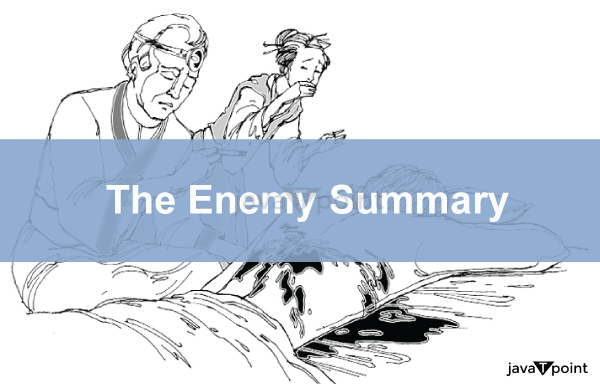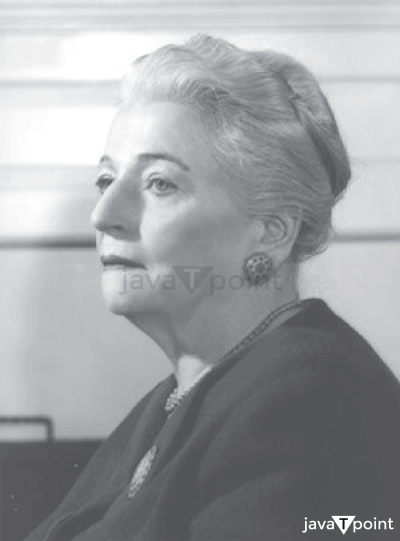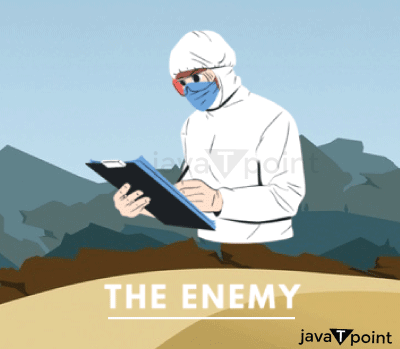The Enemy SummaryThe narrative demonstrates how a Japanese doctor transcends limited national stereotypes in order to safeguard the life of an American Prisoner of War. He puts his reputation, livelihood, position, and even life at stake by providing refuge to an enemy camp war prisoner and sparing his life. The author narrates the tension between the doctor's identity as a private person and an individual with an overwhelming feeling of national commitment. The dilemma is very well described in this beautiful story. 
SummaryDr. Sadao Hoki & his wife Hana are living in Japan at the time of the war when they notice a dark object in the water body that turned out to be a white man-a seriously injured soldier. They initially consent to handing over the individual to law enforcement as being a prisoner of war. The doctor & his wife are both extremist racist nationalists who believe the Japanese are intrinsically superior compared to the white race anyplace in the world, therefore this makes perfect sense when considering not only the repercussions of treating his wounds. Before the war, they had become friends in America, and only his father's approval allowed him to make the proposal. The two decide to treat the man's wounds after having a change of heart after seeing the man's apparent signs of severe suffering; this is in keeping with their conviction in the supremacy of the Japanese people and is a humanitarian gesture of compassion. Of course, they must tell their staff of this choice. The humanitarianism of providing medical care has not mellowed the edges of the servants' racism and prejudices, which are on par with that of their bosses. The servants are open about their hatred for the doctor & his wife as well as their conviction that the guy ought to be left to die. After caring for the white guy for a week and assisting him in recovering from his potentially fatal wounds, the servants left after the doctor refused to comply with their demand that the individual be handed over to the police. The man, an American called Tom, is healthy enough to express his gratitude to the physician for rescuing his life. He is cautioned by the doctor not to make this evaluation too quickly. Hana is concerned when a courier for her husband shows up because she believes the servants have spilled something and will soon be punished. 
The message instead instructed Dr. Hoki to meet with General, a wife-beating warrior of the Battle of Manchuria, for a patient consultation. Without the doctor's surgical expertise, Takima would probably pass away from his severe illness. Sadao decides to tell the General what happened with the wounded soldier. The General agrees to maintain the secret in a fantastic demonstration of self-interest over duty. Since Sadao will probably be put to death if he turns the doctor in, keeping him alive will let him live longer. They decide that the General will dispatch assassins to murder Tom. The soldier has not only not been killed after just a few days but has also regained a lot of his vigour, which makes the doctor even more afraid. Dr. Hoki decides to set up the man's midnight getaway aboard a Korean fisherman's boat without alerting his wife because it appears the General has revised the strategy they agreed upon. Everything appears to be going according to plan with the escape. When the patient is well enough to hear the news, the doctor informs him that the prisoner managed to escape in the middle of the night after being called in for an urgent operation to save the General's life. The General admits that he had become so preoccupied with protecting his own life that he had forgotten entirely about the assassination arrangement. Then he insists vehemently that it was only an instance of negligence and most definitely not a case of neglect of duty or a lack of patriotism. The General assures Sadao that he would be rewarded as part of their agreement for maintaining it a secret. Dr. Hoki scans the horizon for a signal from the American, indicating that he is still secure in his hiding place and waiting for the fishing boat to arrive. But without a signal, the sunsets tell the doctor whether the mission to flee was accomplished. Dr. Hoki believes that this is his true reward. His reflections on his experience in America reveal the full extent of his illogical prejudice against people of the white race. He indeed rejoices that the nation is at war with the "repulsive" whites of the world, and so is the intensity of his loathing for them. Biography of Pearl S. BuckAmerican author and novelist Pearl Sydenstricker Buck was born on June 26, 1892, and passed away on March 6, 1973. Her most famous book, The Good Earth, which was published in 1931 and 1932 and received the Pulitzer Prize in 1932, was the best-selling book in the United States during those years. As the first American woman to receive the Nobel Prize in Literature, Buck was recognized for her "masterpieces," two memoir-biographies about her missionary parents, and her "detailed and truly epic descriptions of peasant life in China." Although Buck grew up in West Virginia, her parents transported their 4-month-old child to China in October 1892. Buck spent the majority of her childhood prior to 1934 living with her parents in Zhenjiang and with her first husband in Nanjing. Buck was born into a family of missionaries and eventually served as one herself. The little girl made the decision to become a writer while on an annual family vacation to Kuling, Mountain Lu, Jiujiang, where they would spend the summers in a villa. After completing her studies in Lynchburg, Virginia's Randolph-Macon Woman's College, she returned to China. She worked as a Presbyterian missionary from 1914 to 1932 after marrying John Lossing Buck, but she eventually began to question the necessity of missions abroad. She resigned as her opinions grew divisive during the Fundamentalist-Modernist conflict. She moved back to the US in 1935, married publisher Richard J. Walsh, and kept up her prodigious writing. She became a well-known campaigner for racial equality and women's rights and wrote extensively about Chinese and Asian cultures. She is best known for her work in favour of Asian & mixed-race adoption. Character AnalysisDr. SadaoDr. Sadao is a surgeon and scientist from Japan. His father, a devout Japanese who was passionate about his culture, raised him. To carry out his father's objectives, Dr. Sadao developed into a skilled physician and scientist. His father funded his medical school studies in America. For the sake of his nation, he wished for him to pursue education. Even before getting Hana married, Dr. Sadao sought his father's blessing. The General was fully reliant on him due to his skill. The fact that the General has unwavering faith in him is evidence of his skill and expertise as a surgeon. HanaHana is the ideal wife, mother, and authentic Japanese. She has a strong sense of national pride and humanitarianism. She abides by all of her husband's decisions. Although she is opposed to the idea of rescuing the enemy, in this case, the American POW, she cannot ignore the fact that he was once a human being before becoming the enemy. When the employees failed to follow her instructions and continued to refuse to provide their services, she acted very dignifiedly. Even in stressful situations, she maintains her composure while being frightened, nervous, and scared. Tom: The American Prisoner of WarHe was shot and managed to flee. Tom was an American prisoner of war. Dr. Sadao discovered him in a terrible state on the shoreline near his home. He was really bleeding and had a large wound. He could have to endure misery and torment. Dr. Sadao removed the bullet during surgery, saving his life. Tom had a strong will, as seen by his quick recovery. The kindness of Dr. Sadao and Hana astounds and astounds him. The GeneralThe General is the army general of Japan. He is a patient of Dr. Sadao. He was elderly and ill, and his only hope for healing was Dr. Sadao. Dr. Sadao had not been sent overseas alongside the Japanese army in part because of this. The general himself attended Princeton and had greater belief in the doctor who had received his training here than in Germany since, in his opinion, Germans were ruthless while Americans had feelings. He offered Dr. Sadao assistance in removing the American soldier, but because he was preoccupied with his illness, he forgot. When Dr. Sadao informed him of the white man's escape, he accepted responsibility and rescued Dr. Sadao. The General guarded Dr. Sadao till the very end because he understood his value as a surgeon & scientist and didn't want to lose him. Dr. Sadao's fatherAlthough Dr. Sadao Hoki's father passed away at the beginning of the novel, his memory persists because of Sadao's reflections and the servants' devotion to their "old master." Sadao considers how his strict, controlling father, "who never chuckled or played with him," pushed him towards the best education feasible, even if that involved sending him to higher education in America, at the beginning of the novel. The cookOne of the housekeepers for Hana and Dr. Sadao Hoki is the cook. She calls Sadao's father her "young master," yet she implies that she is more devoted to him despite his passing. The family employed the cook whenever Sadao was young, and the same for the gardener. She views Sadao as conceited and careless in how he uses his skills, saying that he is "so proud of his skill in preserving life that he protects any life." YumiYumi works as a housekeeper for Dr. Sadao Hoki & Hana. She spends much more time with the kids and cares for them than Hana does. She is overtly biased against Tom, just like the gardener, and criticizes Sadao & Hana for rescuing a white man. She is so horrified by Sadao and Hana's breaking the law and stunning empathy for their foes that she defies orders and eventually flees the home with the chef and gardener. The GardenerOne of the staff members who work for Hana and Dr. Sadao Hoki is an elderly gardener. Since Sadao was a young boy, he has been a crucial family member, much like the cook. He has a strong loyalty to Sadao's father, who is already deceased when the story begins. The gardener's specialty is flowers and moss; when he was younger, he gave Sadao's father "one of the most exquisite moss gardens in Japan" to enjoy. Analysis of the Story
The story includes multiple references to the issue of racism. When Sadao thinks back on how he first met Hana, he remembers waiting to get serious until he was certain that she "had been pure in her race" since otherwise, his father wouldn't have been okay with it. Before the procedure, Yumi wouldn't even touch the American, much less wash him. After he left, she "cleaned the guest room thoroughly...to get the white man's smell out of it." Regarding white people, Sadao feels strongly. He describes them as "repulsive" and claims that "it was a relief to be at war with them openly at last." He also thought that Americans had a lot of bias, which made it difficult for him to live there because he knew they were better than him. The Second World War serves as the author's backdrop as he depicts the atrocities of war through the hapless American sailor who was tortured. The author emphasises that helping the injured is the finest way to benefit humanity and promotes the idea of universal brotherhood. The narrative emphasises the idea that doctors are international in nature. Like Sadao, they must put aside all little grievances and work tirelessly to preserve human existence.
Next TopicThe Canonization Summary
|
 For Videos Join Our Youtube Channel: Join Now
For Videos Join Our Youtube Channel: Join Now
Feedback
- Send your Feedback to [email protected]
Help Others, Please Share









